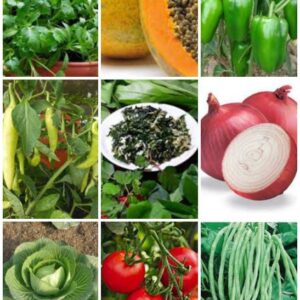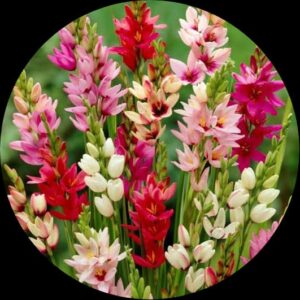- Empty cart.
- Continue Shopping
Capsicam
Original price was: ₹55.00.₹30.00Current price is: ₹30.00.
Ganus : Capsicum
Elevate your culinary experience with our premium Capsicum vegetable plant seeds. Grow your own bell peppers in a variety of colors and flavors, adding vibrancy and taste to your dishes.
Capsicum is a popular vegetable plant known for its colorful, bell-shaped fruits. It belongs to the nightshade family, Solanaceae, and is widely cultivated for culinary purposes. Capsicum is commonly referred to as “bell pepper” or “sweet pepper” and comes in various colors, including green, red, yellow, and orange. Here are some key points about growing Capsicum:
1. Climate and soil requirements: Capsicum plants thrive in warm climates and require a minimum temperature of around 15-20°C (59-68°F) for optimal growth. They prefer well-drained soil rich in organic matter. The soil pH should be slightly acidic to neutral, ranging from 6.0 to 7.0.
2. Planting: Capsicum can be grown from seeds or seedlings. Start seeds indoors 6-8 weeks before the last frost date in your area. Sow the seeds in a seed tray or individual pots, and once they have developed a few true leaves, transplant them into larger containers or directly into the garden. Space the plants about 30-45 centimeters (12-18 inches) apart to allow for proper growth.
3. Sunlight: Capsicum plants require full sun exposure, preferably 6-8 hours of direct sunlight per day. Choose a sunny spot in your garden or provide supplemental light if growing indoors.
4. Watering: Keep the soil consistently moist but avoid overwatering, as excessive moisture can lead to root rot. Water the plants deeply when the top inch of soil feels dry. Avoid wetting the foliage to minimize the risk of fungal diseases. Mulching can help retain moisture in the soil and regulate soil temperature.
5. Fertilization: Prior to planting, incorporate well-rotted compost or organic matter into the soil to provide essential nutrients. Additionally, you can apply a balanced fertilizer during the growing season to promote healthy growth and fruit production. Follow the recommended dosage on the fertilizer packaging for proper application.
6. Support and pruning: Some varieties of Capsicum may benefit from staking or support to prevent the plants from bending or breaking under the weight of the fruits. Pruning can also help promote bushier growth and better air circulation. Pinch off the tips of the plants when they reach a desirable height to encourage lateral branching.
7. Harvesting: Capsicum fruits can be harvested when they reach the desired size and color. The timing varies depending on the variety and maturity stage. Generally, green peppers can be harvested earlier, while red, yellow, and orange peppers are fully ripe when their respective colors develop. Use a sharp knife or scissors to cut the fruits from the plants, taking care not to damage the stems or neighboring fruits.
Capsicum is a versatile vegetable that can be consumed raw in salads, stuffed, grilled, roasted, or added to various cooked dishes. It is rich in vitamins A and C, as well as dietary fiber. By following these guidelines, you can enjoy a bountiful harvest of Capsicum from your vegetable garden.













Reviews
There are no reviews yet.